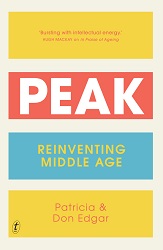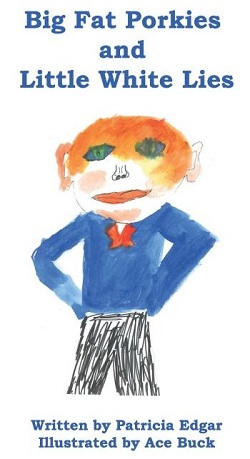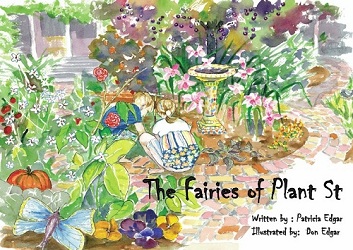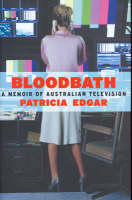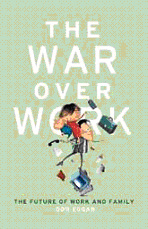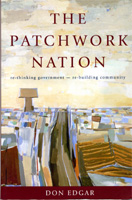PATRICIA EDGAR. Kids Technology and the Future: The Case for Regulation of Australian Children's content (Part 3).
Posted on 6 December 2018
In the dynamic media environment we have in Australia, broadcasting regulation has become an exceptionally tricky exercise. If regulations are to work, they require creative application and on-going monitoring as commercial players will always seek to outmanoeuvre them, especially when they affect programming decisions. Bureaucracies move slowly. It takes time to define, then to pass legislation and once regulations are in place, too often assumptions are made that the job is done. That may be the case in legislating for seat belts or banning smoking in public spaces, but when the desired outcome is a cultural, educational purpose, where judgments must be made about appropriate program content, it is a very different matter. For culturally-based children's programming to succeed today, a simpler regulatory approach than quotas and program approval should be taken.
When the Children's Television Standards (CTS) were first enacted to ensure quality Australian content for children, a diversity of excellent programming resulted for a few years, during which time an international Australian children's production industry was established. But this was not achieved without struggle and conflict between the regulator and the networks. It has been forgotten how strongly the broadcasters fought against the regulation of children's content, even taking the ABT (Australian Broadcasting Tribunal) to the Federal Court and winning their case. That decision forced the Government's hand and they amended the Broadcasting Act to ensure the ABT had the power to require networks to meet the regulations or be in breach of their licence.
When implemented, the Australian system of regulation of children's programs was the envy of many children's producers around the world and seen as a model for other countries. It was a good model, but it took only a few years before both the networks and certain producers found ways to exploit the system. Networks complied with the law, with the least possible expenditure of funds, often burying programs in their schedule with no promotion, and certain independent producers made hay. Cheaper, unimaginative animation, created for the international market, became accepted as equivalent to original Australian drama. Long-running series, with no obvious cultural context, that could have been made anywhere in the world, were devised by Australian producers who ran successful businesses in partnership with overseas broadcasters, supplying them with a regular source of programs generously subsidized by the Australian tax-payer. In some cases Australian 'producers' fronted programs that were scripted and creatively controlled overseas but using Australian funding.
The C system was officially shown to be in trouble by 1999 when the ABA, (Australian Broadcasting authority), ACTF and the AFFC published their report on '20 years of C: Children's television programs and regulation 1979-1999' , which commented on the low production values resulting from the trend to longer series that reduced the variety of children's programs produced and broadcast. Since then children's programming has continued to lose its audience and is generally of minimal cultural value, formulaic and uninspiring.
A few worthwhile programs that have emerged in recent years have come from the ABC, doing the job it should be doing, and they have been outside the quota requirements. Yet Australian lobbyists and producers, in response to the current Screen Content Review, continue to demand more of the same: to retain the forty year-old quotas and expand them across all digital platforms.
The media landscape today cannot be compared to the 70's and 80's when regulations were implemented. Children are no longer tethered to television sets and traditional broadcasters have stiff online competitors who are getting their attention. A Drama Quota for children - that is stories produced by adults to be programmed during defined timeslots - is no longer practical and no longer represents the media most children enjoy and need. Today, experiences which provide lessons for life, vital for children's development, can now be accessed online in many guises. (Described in Part 2).
A new plan for children's programming in this complex, multi-platform, on-demand, digital world should be born from a clear understanding of the needs and interests of the child audience it is intended to serve in 2019. Desirable children's programs and projects should be innovative and diverse and their creation won't emerge from a set of rules and quotas. The regulator's job should be to ensure the financial obligations of broadcasters are met. Producers with the interests of children at heart think about ideas not brands, characters not merchandise, originality and challenge, not recycled plots and cliches. They should be asking, 'Do I have something to say to children that goes beyond the business of feeding the beast and drawing a subsidy?'
Programs must be multi-platform and innovative in concept. They will have to exist in the transformed media landscape, where young people have moved to the platforms built by mammoth, global players. We need to first ask young people what they are doing there and work with the ingredients that attract them. They should be participants in this process. We have a lot to learn about today's young audience for there are opportunities now that did not exist previously. For the first time since television was introduced in 1956, children's interests merge media with education. As well, the audience that broadcast television found most difficult to reach, teenagers, are using multi-platform media enthusiastically.
Government subsidy of children's media entertainment programs is justified culturally but should aim to facilitate their education, mastery and understanding of media. Regulations should not be just about sanitizing and controlling content, and in a world where children's media exposure is uncontrolled from an early age the process of the regulator trying to approve what children view is obsolete.
Children have acquired a taste for programs well beyond the scope of what might have been appropriate 40 years ago. Then the Film Censorship Board would classify any program with social and emotional content as MA15. So you couldn't create a story, for example, about parental bullying, for kids who were bullied to identify with and learn from, without parental supervision. As a producer I ran up against this attitude with programs on an adopted child (thought too emotionally upsetting), another on a newsboy who was interested in radical politics (beyond kids understanding), even jokes in Round the Twist were condemned for going too far, by people who couldn't crack a smile if their life depended on it. Disney desperately wanted to buy the series to boost its ratings in Europe, but urged me to cut out the very content kids loved. Children were always more mature than they were given credit for being.
Projects today must aim to attract them: we can still make them laugh while stimulating their learning and creativity and supporting their capacities to negotiate the cyber-world with its benefits as well as its anti-social media, manipulative and offensive content.
In summary: regulation in this new age should not be about setting quotas and approving programs but ensuring broadcasters meet their obligations to children financially. Networks should be relieved of their quotas for an annual fee as a condition of licence. That fee, along with additional Government support, should go to set up a new agency, a creative Think Tank, which has a brief to make culturally relevant and diverse educational/entertaining children's projects for any platform. They could be games, narratives or children's own productions which may be generated in-house or by the independent industry and could be marketed to any platform including the networks. This is an age when all media providers are hungry for content; well developed good ideas will find buyers and their intended audience. This can be done.
Patricia Edgar is the author of Kids, Technology and the Future; (ASP 2018). Over fifty years she has been at the forefront of policy, research, production and advocacy for children's programs.



